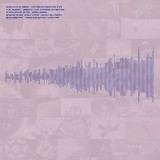Supervisor:
2022
This research paper deals with the study of units, which are intended for Space. First, the concept of "utopia" is described, with emphasis on that of Henry Olerich, who describes the "big house" of a visitor from Mars, as well as literary references and films, the subject matter of which is settled outside the settlement of the Earth sphere. The following is a summary of the galaxy's inner and outer planets and the prevailing environmental conditions of the Moon and Mars compared to those of Earth. Next, the historical background of the telescope and rocket invention is presented, mentioning their individual parts. The invention of the space suit is also projected, on a historical and construction level. The reference in the scientific studies of Tsiolkovsky, Heppenheimer and Zubrin is to decode the structural characteristics, the functional organization and the energy adequacy of the proposed compositions by the same in terms of the settlement of Space. The presentation of the main space missions, from the mission of Sputnik-1 in 1957, the first artificial satellite, to that of the Chinese space station, "Tiangong", in 2021, is the occasion and draws conclusions of the political scene of each era. Then, the orbital and planetary structures are analyzed, some of which are just as an idea, while others are implemented. Comparing them in terms of scenario, structural features and energy self-sufficiency highlights their similarities and differences. Finally, the application of such structures and systems on Earth in areas with extreme conditions is underlined, as the emergence of climate change makes its presence particularly felt in recent years.
